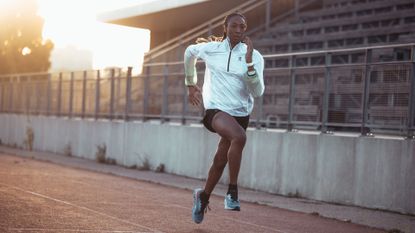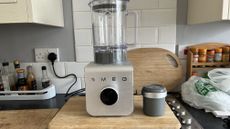All you need is a global pandemic to get people to start running for fitness. At least this is what it looked like two years ago when all of a sudden, millions of new runners appeared out of thin air, thanks to covid. And as cool as it is to see more and more new people get into running, it pains me to see so many of them making the same three running shoe mistakes over and over again.
Running is not a difficult sport. When people ask me how to run a marathon, for example, my go-to advice is, "You start running at the beginning and stop when you reach the finish line." Running is not rocket science, at least not on the level most people will do it anyway. Finding the right running shoe is a bit more challenging, though.
The best running shoes come in many shapes and sizes. Some are best used off-road – trail running shoes – while others can help runners with pronating feet reduce the risk of injury and knee pain (stability running shoes). To make the decision process even more complicated, there are a bazillion brands churning out new shoes almost on a daily basis: Adidas, Nike, Hoka, New Balance, On Running, Brooks, Saucony... the list goes on forever.
How on earth can a new runner choose the proper footwear? Finding the best running shoe for your needs is not impossible, neither it is complicated, but there are three common pitfalls every beginner runner should avoid; here they are.
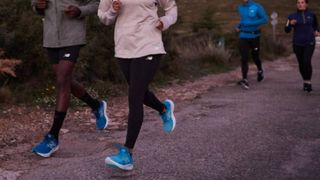
1. Not checking your gait before you buy
We all run slightly differently. Some will land on their heels while others on the balls of their feet; some will have a high arch, others flat feet. Your feet can be narrow or wide, tall or short. If your hamstrings are tight, your stride length will be shorter. If you run faster, you'll pick your heels up more.
A lot of variables, right?
I'll never forget that one runner I saw when I ran the Vitality Half in London a couple of years ago. He wore a pair of Nike ZoomX Vaporfly NEXT%, the best Nike running shoes at the time, but he clearly had pronating feet, so, at every step, his feet caved in, presumably putting a lot of strain on the ankles and knees. I wish he had his gait analysed before he bought the shoes for a lot of money.
Beginner runners don't know how to assess their own running form, so it's best to visit a local running shop where experts can do it for you. In most cases, they will even recommend shoes based on the assessment. If you can't be bothered to interact with people, you can perform an at-home gait analysis, but it'll only give you so much information.
HOW TO RESOLVE THE ISSUE: You need shoes that enable you to perform at your peak, whatever your running style, but the only way to know this is to have your gait analysed.
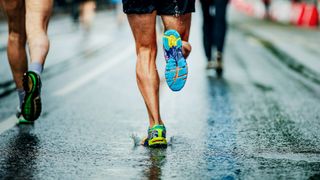
2. Not measuring your foot-length/checking sizing info
I come across many running shoes, and I often receive them before they are launched to the public. This might sound like I'm bragging, but it's actually a cautionary tale. Pre-launch shoes are often sent to me without information on sizing and fit, and sadly, this means that some are too tight/loose, even though they are all "my size".
Most runners don't have to gamble on how their chosen shoes will fit, but they often do. Why? Because they don't know any better. They think, "my shoe size is 9.5; I'll get a running shoe that size." You'd be surprised to hear that different shoes from the same brand can have a unique fit, which is why you need to check the sizing info for the exact shoes, you're about to get before you complete the checkout process.
There is an easy way to make sure you always choose the right size running shoe: measure the length of your foot.
[Actually, you should measure both as they can be slightly different.]
Once you know how long your feet are, you should check this against the size guide on the shoes' product page and see what size is closest to your measurements. If you're unsure, always go a half size up, especially if you have wide feet.
It's also important to keep in mind that some running shoes are meant to be tighter than others. Shoes designed for racing are snugger than max cushioned trainers such as the ASICS Gel-Nimbus 24. The upper material can also influence how it feels to wear the shoes; the On Cloudmonster is a tighter running trainer, while the Nike ZoomX Invincible Run Flyknit has an upper with more give.
HOW TO RESOLVE THIS ISSUE: Get a measuring tape or a ruler and measure your feet before you buy running shoes.
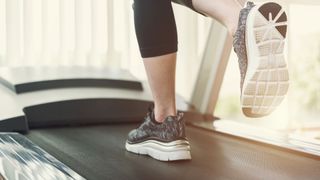
3. No getting the right shoe for the training you do most
People – beginner runners anyway – often choose running shoes based on their looks. Most will opt-in for a pair of Nike Air Zoom Pegasus 38 because it looks cool, not because the shoes fit the purpose the best.
[The Peg 38 is an excellent running trainer, for the record.]
Before you consider buying any running shoes, you should think through what you will use them for. Do you need a pair of trainers for jogging, or are you getting ready for your first 5k, 10k or marathon? Are you planning on running a lot on tarmac or want to improve VO2 max by doing hill sprints and fartlek?
Sadly, there is no one-size-fits-all solution for all your running needs. The Nike ZoomX Streakfly is the perfect running shoe for 5-10k races but not so great for people who need a reliable pair of running shoes for daily training. The Brooks Hyperion Tempo might be the best Brooks running shoes, but they aren't recommended for jogging.
Form would follow function, especially when buying performance footwear.
Fancy buying a new pair of running shoes? Below you'll find today's best women's and men's running shoe deals for your attention.
HOW TO RESOLVE THIS ISSUE: Always read the small print and reviews of the shoes; most experts will be able to tell you what the shoes are best used for.
